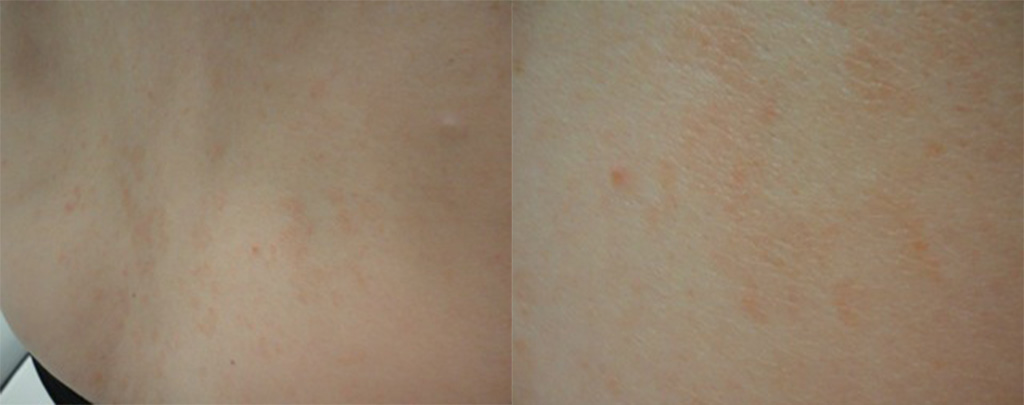Pityriasis versicolor
Also known as tinea versicolor
What is pityriasis versicolor?
Pityriasis versicolor is a common skin rash in puberty and early adult life but can occur in infants. It is more common in warm humid environments and may be seasonal. Most people with this condition are concerned about the appearance of the rash. Sometimes it may cause minor symptoms such as scaling, itch or irritation. It can be much more widespread if there is a problem with the immune system.
What causes pityriasis versicolor?
Pityriasis versicolor is a skin reaction to overgrowth of normally occurring yeast organisms (Malassezia genus, formerly known as Pityrosporum) living on the skin. About 90% of healthy people have these yeast organisms growing on their skin but they grow in larger numbers with sweating and humidity and where the sebaceous (oil) glands in the skin are very active. Some people may have an inherited predisposition to overgrowth of these organisms. The yeast produces chemicals which may affect the normal pigment production in the skin.
What does pityriasis versicolor look like?
The typical appearance of the rash is of a discoloured round or oval shaped eruption most commonly on the upper trunk region, sometimes extending to the neck or upper limbs. Occasionally, the rash may affect other areas of the body. The colour of the eruption may appear lighter or darker than the surrounding normal skin, hence the name “versicolor”. The rash itself may be slightly raised with a fine scale.

How is pityriasis versicolor diagnosed?
The diagnosis of pityriasis versicolour is based on a clinical examination and the typical appearance of the eruption. The affected skin may show yellowish fluorescence under long wave ultraviolet light (Wood’s lamp) examination. Samples may be taken from the fine scaly skin of the eruption to check for the typical yeast organisms. In rare cases, a skin biopsy taken under local anaesthetic may be required for examination under a microscope.
How is pityriasis versicolor treated?
Treatment may be required if the rash is causing concern. Treatment is directed towards reducing the number of yeast organisms living in the skin of the affected areas, using an anti-fungal preparation applied directly to the skin. Examples include imidazole lotions or creams (such as ketoconazole, clotrimazole, econazole, miconazole) and anti-dandruff shampoos (such as ketoconazole, zinc pyrithione, selenium sulphide, ciclopirox olamine).
For smaller areas, one of the imidazole creams or lotions may be suitable and may be applied once or twice daily for 1 to 4 weeks.
For larger areas, one of the above anti-dandruff shampoos may be used as a body wash. The shampoo is applied to the whole affected area (after wetting the skin) and left on for 5 to 10 minutes before washing off. This is to allow time for the active ingredient to penetrate into the skin and hair follicles to reduce the number of yeast organisms. The treatment is performed daily for 1 to 4 weeks and subsequent maintenance therapy once or twice a week may be required to prevent recurrence. The effectiveness is generally improved with a longer course of treatment and a higher concentration of the active ingredient. If skin irritation occurs, treatment should be stopped and medical advice obtained.
Oral anti-fungal treatment may be considered in unusually severe or resistant cases but there is a risk of side effects and drug interactions occuring with these oral medications. Your doctor will discuss these issues.
The discolouration of the skin may take some months to return to normal, even after successful treatment.
This information has been written by Dr Lloyd Hale
Updated 26 June 2015